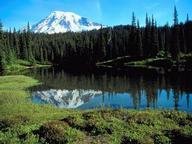Quiz Answer Key and Fun Facts
1. Who asked Congress for the funds to prepare an expedition for the monumental trek that Lewis & Clark undertook?
2. What was the original name of the Lewis and Clark expedition, before it was shortened to what it was more commonly called?
3. The Lewis and Clark expedition traveled a total of almost 8,000 miles in over two years, but likely would not have succeeded if not for the help of various Indian tribes, and in particular, the help of the renowned Sacagawea. Of which Native American tribe was she a part?
4. Lewis and Clark encountered many Native American tribes, but their longest period of contact with any of them was with which tribe, a tribe that saved the expedition from starvation?
5. Lewis and Clark had good diplomatic and trading relations with many Native American tribes, but which two tribes below were hostile, and gave trouble to the expedition?
6. Which of these Forts, is NOT a notable location along the Lewis and Clark expedition's trail?
7. Despite all the incredible hardships, the Lewis and Clark expedition started out with about 40 men, and only suffered one death. Who perished?
8. In November 1805 Lewis and Clark reached their Pacific Ocean destination. After ten days of reconnaissance, they reached their westernmost point at the mouth of the Columbia which was named by a British furrier. What was the point called?
9. What is the only site along the entire Lewis and Clark Historic Trail on which the public can see actual physical evidence of the expedition?
10. On the return trip Lewis and Clark arrived back to the site where they had started the journey when Meriwether Lewis camped for four days in 1804 making final preparations. What is the name of this historic site?
Source: Author
Billkozy
This quiz was reviewed by FunTrivia editor
ponycargirl before going online.
Any errors found in FunTrivia content are routinely corrected through our feedback system.
